Though it’s the smallest country in Central America, Belize’s unique terrain and tropical climate mean that it has just as much to offer as its more expansive neighbors. The Meso-American Reef — the second-longest coral reef in the world after Australia’s Great Barrier Reef — runs the entirety of Belize’s 240-mile-long coastline, and it only takes a few minutes of driving away from Belize City before dense, verdant jungle replaces the coastal views.
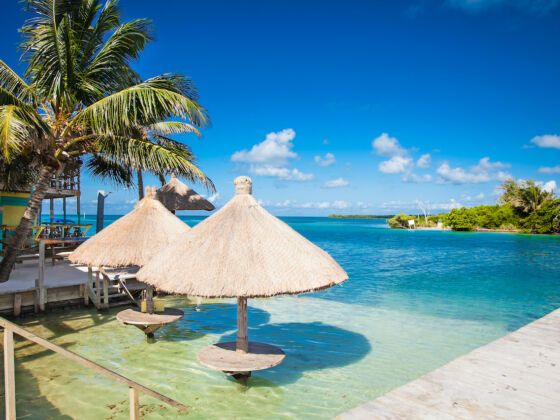
The Best Itinerary for a Magical and Eco-Friendly Vacation in Belize
And as you’d expect, Belize’s combination of ocean life and lush landscapes attracts travelers with a sense of adventure (and a willingness to sweat a little.) Belize’s healthy reserves, jungle, and natural sites are the main draw for most tourists, which is why it’s essential to protect the country’s natural resources. Since the country’s tourism relies on a healthy environment, and many locals rely on tourism, planning an eco-friendly trip to Belize is key to ensuring both wildlife and small communities can thrive.
For the perfect sustainable trip to Belize, read on to learn about the best places to stay, trips to take, and places to explore to make sure you’re keeping the country’s wildlife and wild spaces healthy as can be.
Day one: Live the island life on Caye Caulker
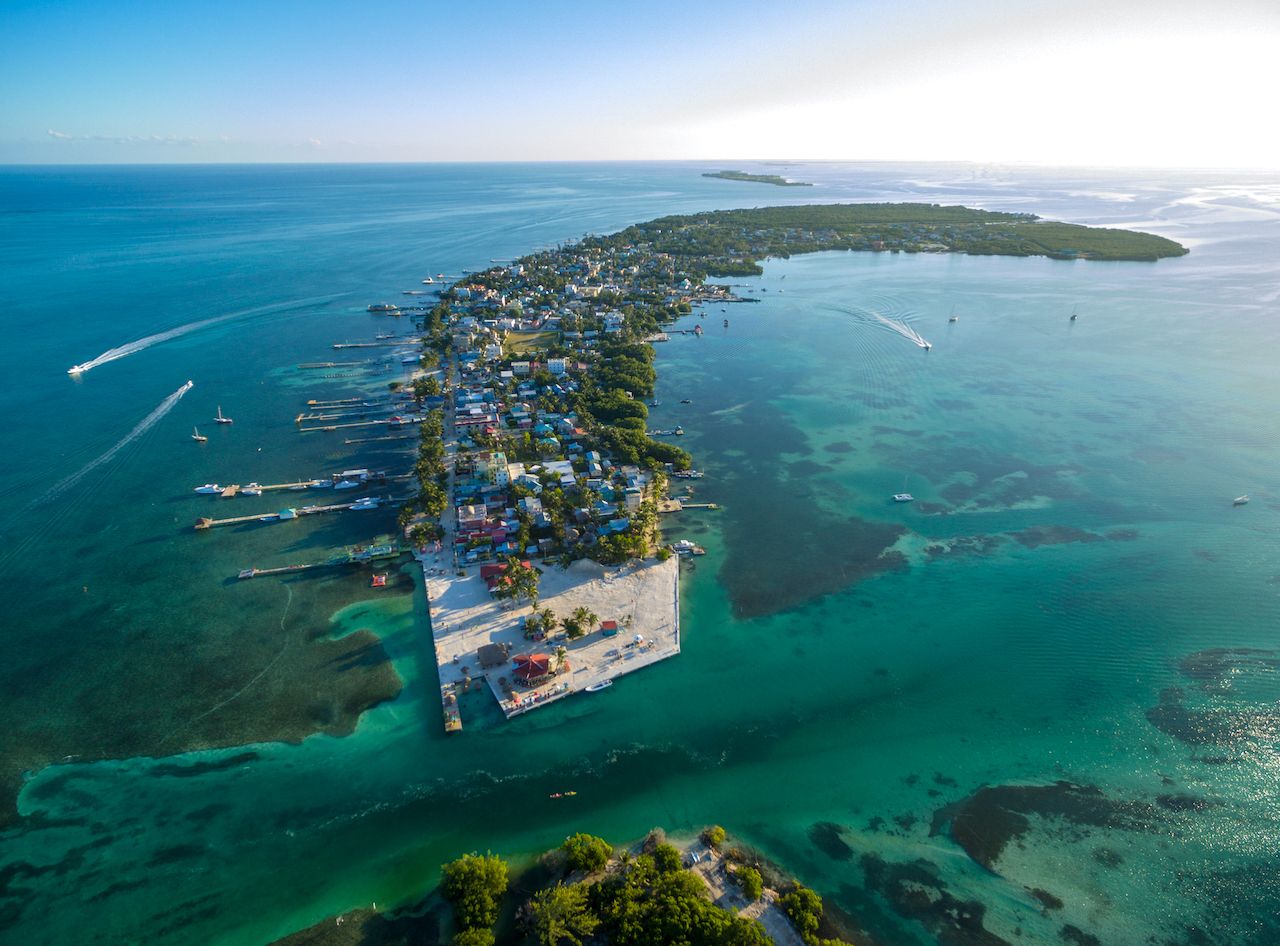
Photo: photosounds/Shutterstock
Most travelers seeking a beach escape head to Ambergris Caye, but if you’re trying to plan a sustainable trip to Belize, head instead to Caye Caulker. It’s just a 45-minute water taxi from Belize City, and since the island is free of cars, you’ll be doing your part to keep your carbon footprint down while you’re there. You can walk everywhere, every bar and restaurant is open-air, and shoes are decidedly optional.
If you’re into diving, you’ll appreciate that Caye Caulker is actually closer to the Great Blue Hole, one of the world’s most famous diving and snorkeling sites, than Ambergris Caye. Traveling with a small scuba dive shop in Caye Caulker is a great way to support small businesses and fight over-tourism in Ambergris Caye, and ensure you reach the Great Blue Hole before the tourist boats from Ambergris. Consider diving with locally owned and PADI-certified Frenchies Dive Shop.
If you’re not diving, spend your time at the Split. It’s the best beach on the island and is home to a few beach bars and places where you can rent beach chairs or snorkel gear. Be sure to wear reef-safe sunscreen on the island.
Day two: Make friends at the Community Baboon Sanctuary

Photo: Randy Bjorklund/Facebook
While you’re likely to see (or at least hear) howler monkeys if you venture into Belize’s jungle, if you want the best chance of seeing monkeys, do it in a place safe and cage-free environment: the Community Baboon Sanctuary. Black howler monkeys (which locals call baboons) are endangered due to deforestation and the encroachment of grazing and agricultural land, so in 1985, two concerned primatologists opened the sanctuary.
As if protecting howler monkeys wasn’t enough, the sanctuary is staffed entirely by women from local villages, providing them with employment and education while also saving wildlife. The center is small, but visits include access to the museum and a guided walk through the reserve. While howler monkey encounters aren’t guaranteed, they are likely, and the howlers are usually happy to come close to grab a fresh green leaf from your hand. As of 2019, the sanctuary protected more than 2,000 individuals across its 20-square-mile area.
Day three: Head into the jungle at Black Rock Lodge

Photo: Suzie Dundas
Many of Belize’s best hotels are deep into the jungle, and none capture the beauty of that landscape better than Black Rock Lodge, an off-the-grid eco-lodge on the Macal River. In fact, you’ll get a free beer in the restaurant if you manage to make it over the resort’s small waterfall without flipping your river tube.
Whether you book a low-key cabin or one of the more luxurious suites, it’s one of the best places to stay for a sustainable Belize vacation. The lodge backs to the Mountain Pine Ridge Forest Reserve, so hiking and birding are always on the agenda. It’s carbon neutral and has its own organic garden, waste-water treatment plant, and solar and hydropower systems. It’s actually reforesting its 20-acre site that was once cleared for livestock grazing. It offers free sustainability tours as well as night hikes to help you spot nocturnal creatures like tree frogs and — if you’re lucky — even jaguars. The thatched-roof restaurants and reception area is one of the most beautiful buildings you’ll see in the country.
Day four: Explore the ruins of a Mayan metropolis
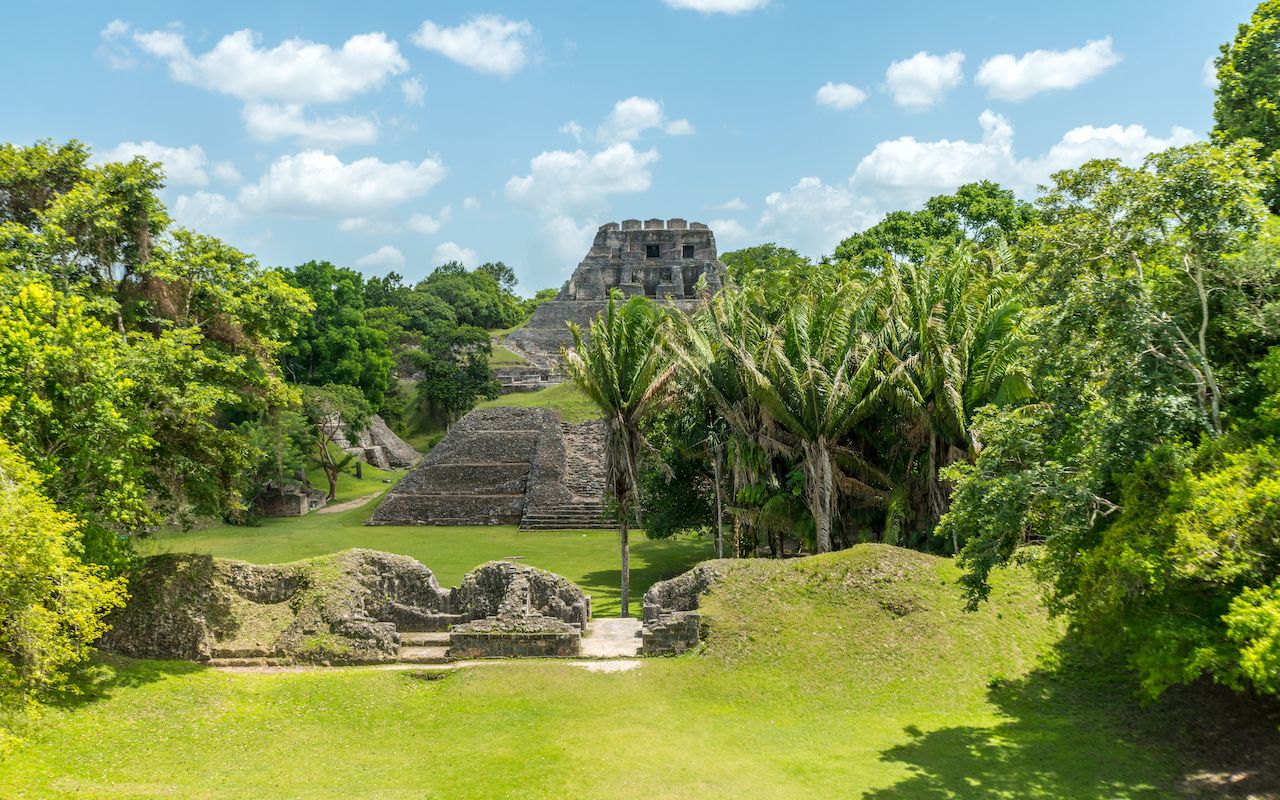
Photo: Milonk/Shutterstock
Pronounced “Zhu-nahn-tu-nich,” the Xunantunich ruins were once an enormous Mayan city — one of the largest ever built, in fact. The area currently available to visit is about one square mile, but archaeologists are confident there’s more in the area to uncover and will likely be working here for decades to come. The site is home to a small museum worth visiting first to gain background knowledge on the site and Mayan culture as information near the actual ruins is minimal.
You have a few ways of visiting Xunantunich. You can certainly go alone if you have a car; the site is open from 9:00 AM to 5:00 PM most days. If you’re lucky, you may even find a docent or on-site volunteer willing to spend some time chatting with you and sharing their knowledge and enthusiasm. If you don’t have a car or prefer a guaranteed tour guide, book a tour of Xunantunich with a locally owned guiding company to help some of the country’s more remote economies. Good choices include PaczTours, UnTame Belize, or Get to Know Belize.
Day five: Adventure through the Mayan underworld
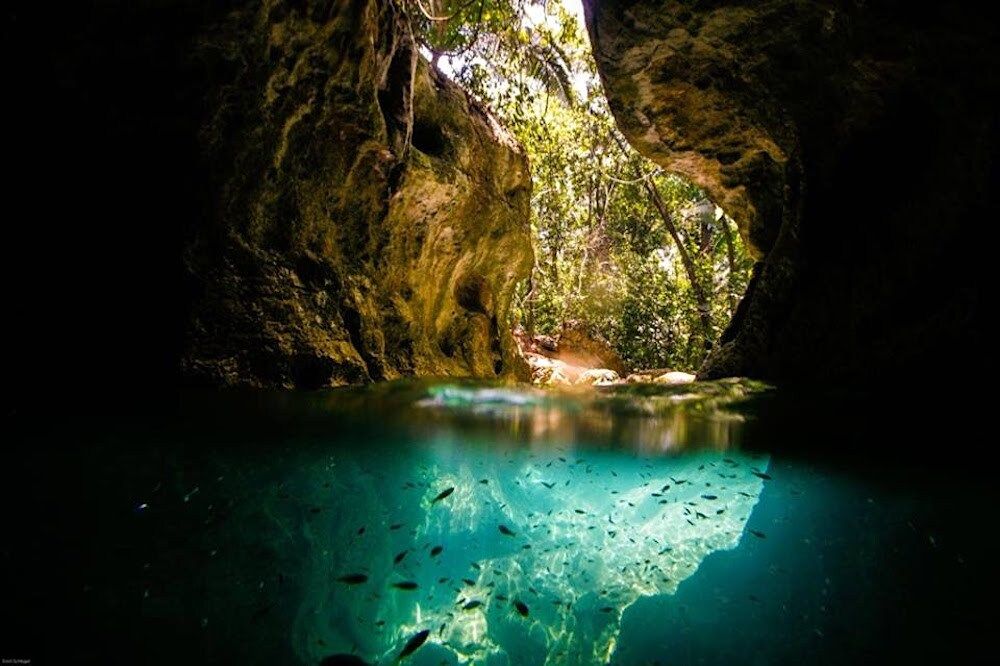
Photo: Pacz Tours
Belize — along with Guatemala and Honduras — was the geographic and cultural center of the Maya, who flourished from around 2000 BCE. to around 1500 CE (depending on your source). If you’ve already toured a Mayan city, spend the next day learning about Mayan culture — and you’ll need to go deep into the heart of the Mayan underworld to do so.
Fortunately, the Mayan underworld is relatively accessible, provided you don’t mind a bit of swimming and dark spaces. The Maya thought Actun Tunichil Muknal Cave (ATM Cave for short) was the gateway to the underworld, linking the surface level with spirits and gods deeper in the earth. It was a sacrificial site, which you’ll see for yourself if you make it to the end.
If you’re planning a sustainable trip to Belize, ATM Cave is one of the best to visit as access to the cave is highly controlled. To protect its cultural and environmental value, the government permits only a small number of guests to visit per day, escorted by an approved tour guide. What you can carry in is very limited — no cameras, sunscreen, backpacks, or anything else that could otherwise cause damage — and you’ll need to wear clothing over your swimsuit in respect of the cave’s religious importance for Mayan descendants.
Tours of the cave last around three hours, and your guiding company will provide life vests, headlamps and helmets, and knowledge on the history and technology of the cave. It doesn’t require extreme physical fitness, but you should be comfortable swimming, hiking, and doing some light spelunking.
Day six: Hit the beach at Hamanasi Resort
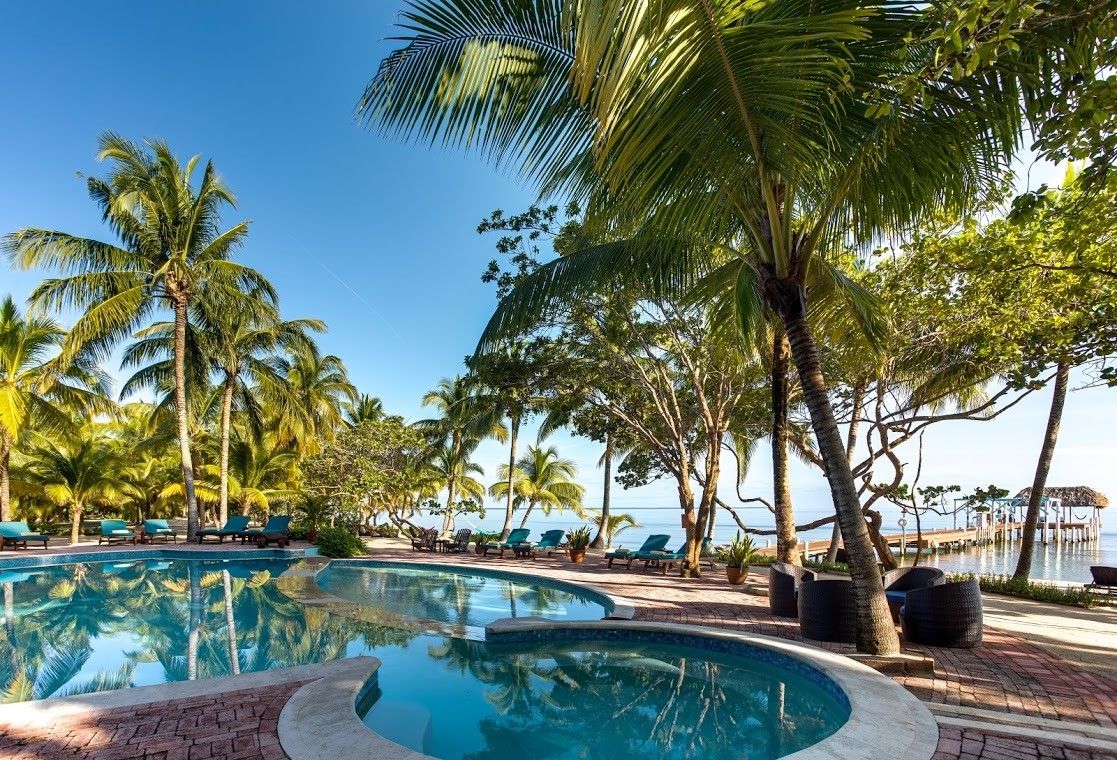
Photo: Hamanasi Resort/Facebook
Once you’re done exploring the jungle (as if that would ever be possible,) head south to the beaches of the Placencia Peninsula, a 16-mile-long strip of small communities and coastline ending in the low-key resort town of Placencia. A great place to stay is Hamanasi Resort, about 30 minutes north of the peninsula in the town of Hopkins, which has an admirable list of initiatives to support sustainable communities and clean beaches. The resort buys all its amenities and food locally; grows its own fruits and vegetables; propagates its own seeds; has no single-use products; and makes the most of its furniture in its on-site carpentry shop. It even has a large part of the property reserved just for wildlife — don’t expect a hotel expansion anytime soon.
Snorkeling is always an option at this beachfront resort, but certified scuba divers may want to consider taking part in a lionfish spearfishing adventure. Though it may sound counterintuitive, removing lionfish is paramount to reef health. Lionfish are a highly invasive species with no natural predators, so high populations lead to a loss of biodiversity, which eventually kills the reefs. You can learn to prepare your catch for lunch when you finish your dive. You may also be able to safely snorkel with whale sharks if you’re in the area between March and June.
Day seven: Stretch your legs at the Cockscomb Basin Wildlife Sanctuary & Jaguar Preserve

Photo: Matyas Rehak/Shutterstock
For the final day of your sustainable trip to Belize, pack your waterproof hiking sandals and head to the world’s only jaguar preserve. The reserve is 250,000 square acres and is home to approximately 200 jaguars, though you’re unlikely to see one during your visit — they’re very stealthy creatures. However, while taking one of the park’s hiking routes, you may see their footprints, called pugmarks. Truthfully, it’s far more likely that they’ll see you rather than the other way around.
The sanctuary has several hiking trails, various swimming areas, a small visitor center, and several waterfalls. It also rents tubes and offers tours and presentations on the park’s flora and fauna, which include more than 300 bird species as well as small mammals like jaguarundi and coatimundi, peccaries (akin to wild pigs), howler monkeys, and adorable rodents like gibnuts and agouti. You can take a taxi from Dangriga to reach the reserve, though most guests find it easier to book a tour through their hotels, which usually include lunch, too.